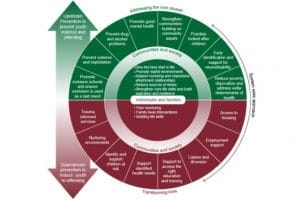
Neurodiversity – a whole-child approach for youth justice
Professor Amanda Kirby summarises the evidence base around neurodiversity and sets out key lessons for those working in youth justice.
Here you can find over 500 posts tracking every major development in criminal justice since 2011. You can track crime trends, court modernisation and digitisation programmes and the impact of austerity. If you’re looking for something in particular, try the search box below.

Professor Amanda Kirby summarises the evidence base around neurodiversity and sets out key lessons for those working in youth justice.

Details of the Government’s new “Beating Crime” plan

Transform Justice on what the public thinks of diversion schemes.

HMI Probation presents critical success factors for effective multi-agency work in youth offending services.

Crime stats for year to March 21 significantly affected by COVID. Big decrease in theft offset by rises in fraud & computer misuse.

Revolving Doors report finds delivering tailored interventions that meet the health and human needs of young adults can turn young people’s lives around.

A criminal justice joint inspection says better assessment, treatment and support could help break the cycle affecting too many neurodivergent people.

HMI Constabulary call for radical action to tackle crime epidemic against women and girls

Black women with criminal records face harsher barriers to employment – report from Working Chance

The Sentencing Academy probes racial disparity in custodial sentencing over the last decade.

Charlotte Threipland of APPEAL questions the fairness of the single justice procedure used for more than half a million low level offences a year.

Children are over represented in statistics on crime and violence, both as victims and as perpetrators. To be able to charge them with criminal offences at 10 years is failing them before they have a chance.